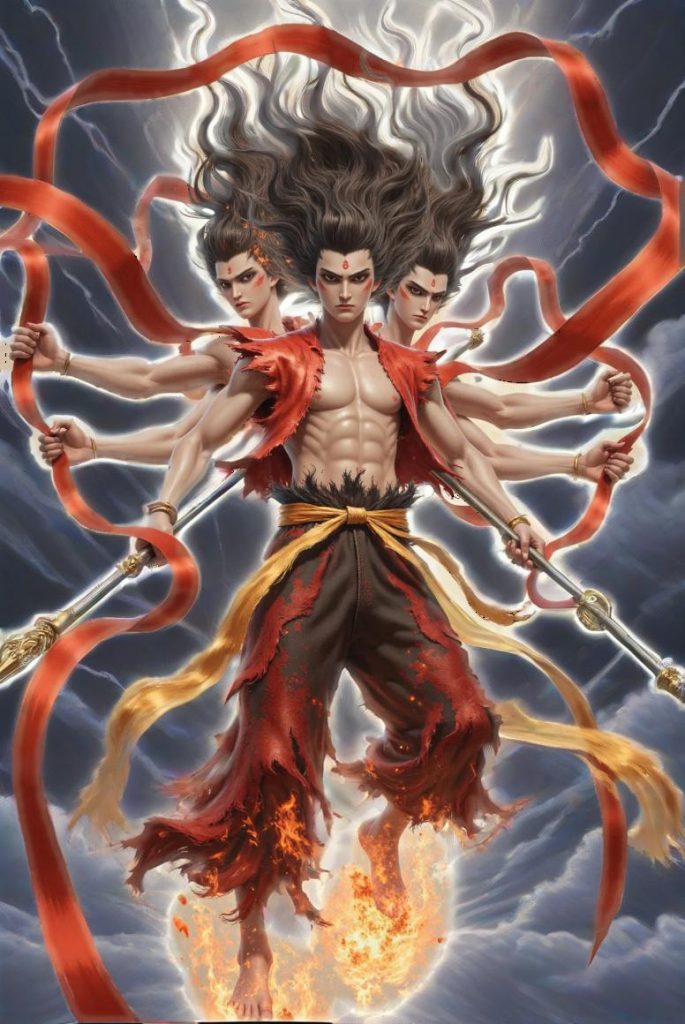
Nezha is a prominent deity in Chinese mythology, known for his powerful abilities, rebellious spirit, and unwavering dedication to justice. His character has evolved through various literary works and folk tales, solidifying his place as a beloved figure in Chinese culture.
Key Characteristics and Origins:
- Diverse Origins:
- Nezha’s origins can be traced back to Buddhist mythology, where he was known as Nalakuvara, the son of the Northern Heavenly King Vaishravana.
- Over time, his image was integrated into Taoist mythology, becoming a powerful Taoist deity.
- Literary Popularity:
- Classic Chinese novels such as “Journey to the West” (西游记) and “Investiture of the Gods” (封神演义) have played a significant role in popularizing Nezha’s story and shaping his iconic image.
- Iconic Attributes:
- He is often depicted as a youthful deity wielding powerful weapons, including the Fire-tipped Spear (火尖枪), the Universe Ring (乾坤圈), and the Armillary Sash (混天绫).
- He famously rides on the Wind Fire Wheels (风火轮), allowing him to travel at incredible speeds.
- One of the most well known aspects of Nezha’s legend, is him being reborn from a lotus flower.
Notable Deeds:
- Trouble at the Eastern Sea:
- One of Nezha’s most famous stories involves his conflict with the Dragon King of the Eastern Sea, resulting in a dramatic confrontation.
- The Investiture of the Gods:
- In the “Investiture of the Gods” novel, Nezha plays a crucial role in the war between the Shang and Zhou dynasties, demonstrating his martial prowess and loyalty.
Cultural Significance:
- Nezha’s image embodies bravery, righteousness, and a willingness to challenge authority, making him a symbol of strength and resilience.
- His popularity has surged in recent years, particularly with the success of animated films like “Ne Zha” (哪吒之魔童降世), “Ne Zha 2” (哪吒之魔童闹海),introducing his story to a new generation.
In essence, Nezha is a dynamic and enduring figure in Chinese mythology, whose story continues to captivate audiences of all ages.

Leave a Reply